Laura Knight in 5 Paintings: Capturing the Quotidian
An official war artist and the first woman to be made a dame of the British Empire, Laura Knight reached the top of her profession with her...
Natalia Iacobelli 2 January 2025
The Pre-Raphaelite Brotherhood, an all-male artistic fraction active during the second half of the 19th century, has become synonymous today with sensuous, highly stylized depictions of ethereally beautiful, perpetually expressionless women. Pre-Raphaelite Sisters, the exhibition in the National Portrait Gallery in London took place from October 2019 to January 2020 and explored the largely untold stories of the women behind and within this most iconic brotherhood in art history. Let’s discover Pre-Raphaelite Sisters together!
More specifically, the exhibition focused on the contributions of the 12 women most involved with the movement. Some, like Evelyn de Morgan, Jane Morris, and Christina Rossetti, are more famous than others, such as Marie Stillman, Fanny Eaton, and Joanna Mary Boyce. The multi-media exhibition included paintings, embroideries, and poems by the 12 “sisters” in a harmonious space where all of their artistic accomplishments could be celebrated.
Many of these women inspired and sat for the Pre-Raphaelite painters, some were married to them and most of them were artists themselves. Out of the 12 “sisters,” all of them had modeled for the “brothers” at some point, and five of them were painters themselves (Elizabeth Siddal, Evelyn de Morgan, Georgiana Burne-Jones, Joanna Mary Boyce, and Marie Stillman).
Out of the rest, four were models, such as Fanny Eaton, Fanny Cornforth, Effie Millais, and Annie Miller, while Jane Morris was an embroiderer, Maria Zambaco was a miniature sculptor, and Christina Rosetti was a poet. Despite that diversity, history (or, rather, the systemic sexism prevalent in the historical canon) has only documented them as muses, neglecting to acknowledge other, more interesting facets of their lives.
In her cornerstone book that launched an inquiry into the gender relations of the 19th-century art world, Pre-Raphaelite Sisterhood, Dr. Jan Marsh – who also curated the National Portrait Gallery exhibition – asks “Were they indeed as passive as their portrait painters and critics contrived to suggest?” The answer, as always, is never black and white – but suffice it to say that the lives and times of the so-called “Pre-Raphaelite sisters” are much more interesting and complicated than one would imagine. Marsh states that they were far from passive mannequins:
these women actively helped form the Pre-Raphaelite movement as we know it. It is time to acknowledge their agency and explore their contributions.
Dr. Jan Marsh, press release for Pre-Raphaelite sisters exhibtion, National Portrait Gallery.
Here, more specifically, we will focus on the five Pre-Raphaelite sisters who rivaled the PRB in terms of talent and notice how their unique perspective has contributed to shaping the Pre-Raphaelite movement.
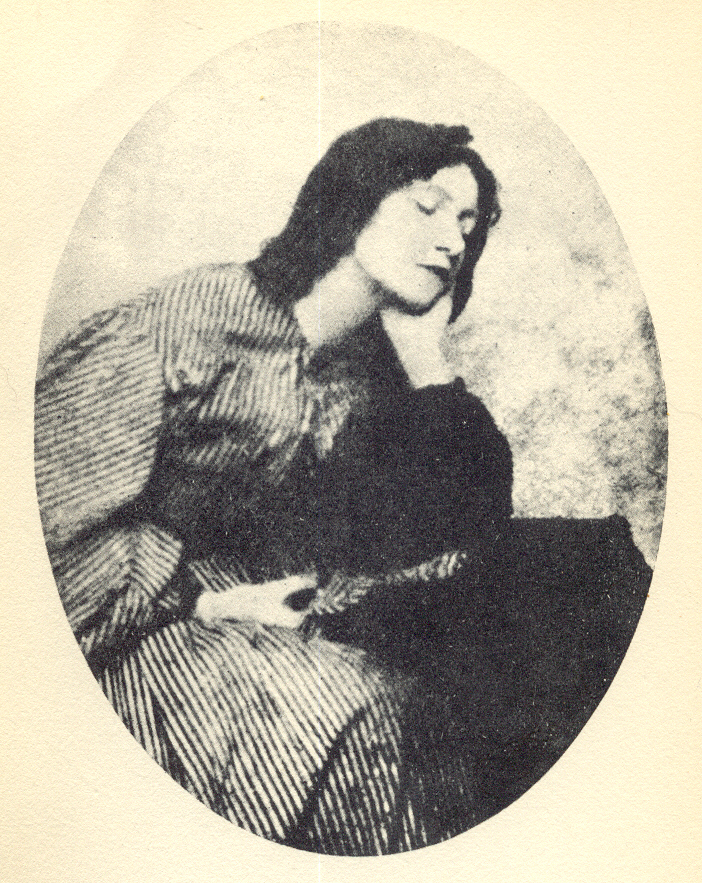
Elizabeth Siddal (1829-1862), born in London, started as a model to fund her artistic practice, as she did not come from a family which could financially support her artistic endeavor. Siddal, who went on to marry Pre-Raphaelite Brotherhood “leader” Dante Gabriel Rossetti, evolved into the symbol of idealized femininity. Sadly, she died at the age of just 32 from an opioid overdose.
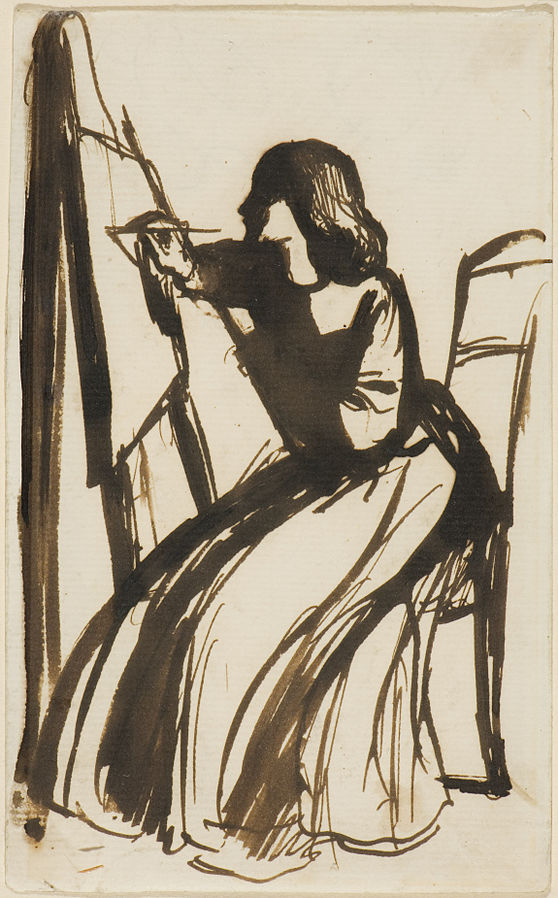
As Helen Lewis writes for The Atlantic, Siddal was more than a plain model; she brought to life the fictional characters she posed as. The most famous depiction of hers was by John Everett Millais. In it, she embodies the Shakespearean heroine – Ophelia, drowning in a river. Siddal had to stay for hours on end in a bathtub for the five months that it took Millais to complete the painting and by the end of the ordeal, she had caught pneumonia.
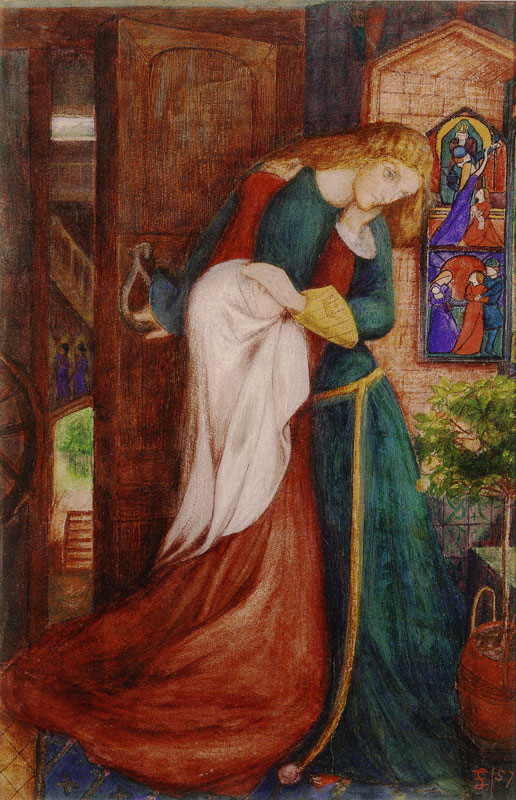
“Why has Siddal’s story been reduced to that of the pale figure in the bathtub, or of the tragic addict who inspired Rossetti’s masterpiece?” Lewis asks. “Because it doesn’t fit the accepted view of the Pre-Raphaelite Brotherhood as, well, a bunch of men.” Indeed, Siddal was highly artistic, a talented poet and painter, but her gifts seem to have been lost in history.
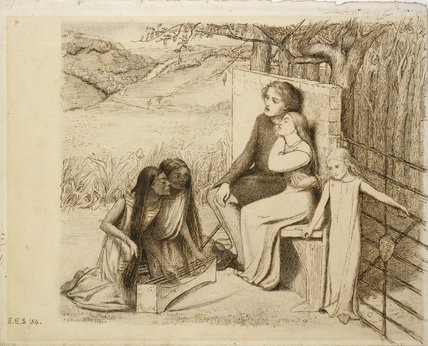
Her style is adherent to the Pre-Raphaelite principles, of course – it is heavy in medieval iconography and bucolic imagery. However, it is with a twist; Siddal was self-taught. That is something which, according to Hettie Judah’s exhibition review of Pre-Raphaelite Sisters, makes Siddal’s figures look “boneless.” That attribute is not necessarily negative. It is, rather, what makes her shapes a bit more otherworldly, almost reminiscent of Remedios Varo’s women, making Elizabeth Siddal’s art stand out all the more for its unconventional nature.
Joanna Mary Boyce (1831-1861), was the sister of Pre-Raphaelite painter George Price Boyce. The female artist produced a multitude of works with a variety of themes.

The topics she chose to depict ranged from historical paintings to portraits. She worked mainly on canvas, yet for long she abstained from exhibiting her work, feeling it was “improper for a woman to do so.” Boyce was also a contemporary art critic, publishing her texts in the Saturday Review newspaper. In her writings, she praised the Pre-Raphaelite movement’s “sincerity.”

Boyce did ultimately exhibit her painting Elvira at the Royal Academy in 1855. It garnered the attention of John Ruskin, who was quoted as saying
it seems to me that she might entertain the hope of taking place in the very first rank of painters.
John Ruskin, The works of John Ruskin, ed. E.T. Cook and Alexander Wedderburn.

It is a standalone fact that women of all ages are at the center of her oeuvre. The last work Boyce completed before dying during childbirth was a portrait of one of the Pre-Raphaelite Brotherhood’s favorite models, Fanny Eaton, a Jamaican immigrant. The portrait stands out for its graceful, touching, and yet powerful depiction of the subject.
Joanna Mary Boyce’s untimely death halted what could have been a successful career of a highly skilled Pre-Raphaelite painter. The loss of her talent is great, but, luckily, she left behind a large number of masterful works that survive to this day.
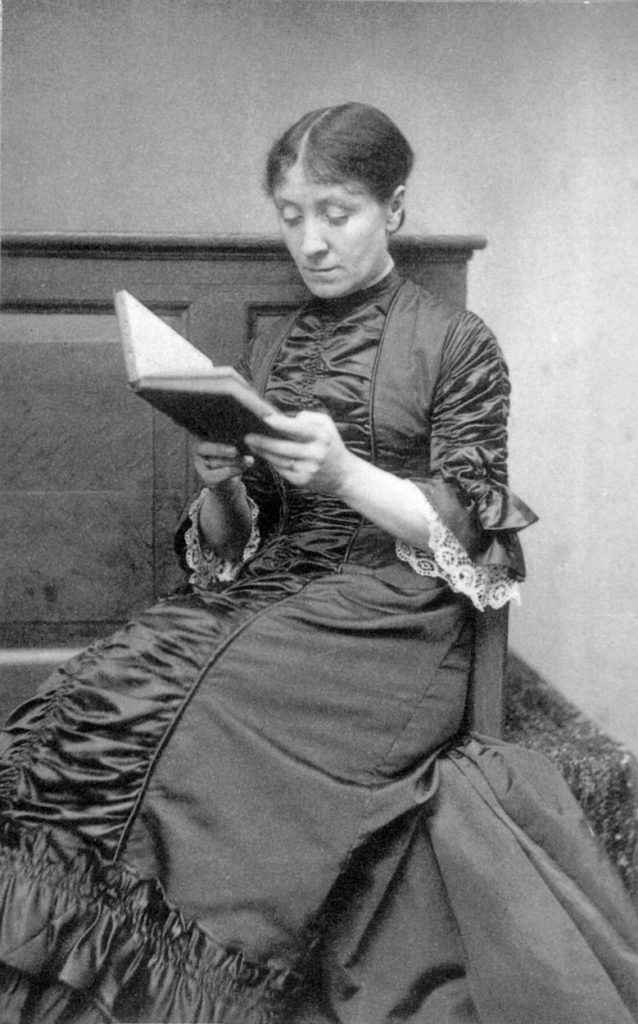
Georgiana Burne-Jones (1840-1920), also known as Lady Burne-Jones was born in Birmingham. She attended the Government School of Design in London and later received classes from Pre-Raphaelite painter Ford Madox Brown.
A few examples of her work survive, one of them this watercolor rendering of a dead bird. She completed it at just 17 years old. According to Tate Britain’s website, Burne-Jones joined the Pre-Raphaelite circle at the age of 15 and was highly influenced by critic John Ruskin who “encouraged artists to focus on the appearance and significance of nature and natural forms.”
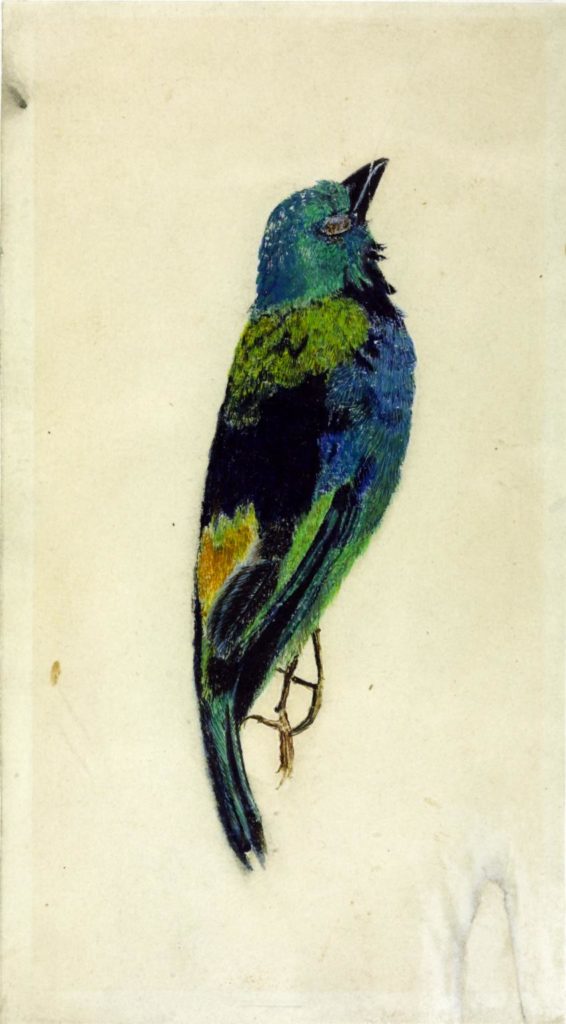
The bird appears to be a Green-Headed Tanger, imported from South America. The detailed nature of the life-sized work reflects both contemporary interests in natural history, a common occupation for women painters in Victorian England would be botanical illustration and Burne-Jones’ intensive study alongside Brown.
Georgiana Burne-Jones married Pre-Raphaelite Brotherhood artist Edward Burne-Jones. In 1861, William Morris and some of the leading Pre-Raphaelite Brotherhood figures, Burne-Jones among them, created their decorative firm. The goal of the brand was to create and sell medieval-inspired, handcrafted home décor items. Georgiana Burne-Jones, as an employee, painted tiles for a short period before the birth of her son forced her to resign.
Burne-Jones had an artistic vein, though it remained undeveloped due to constraints imposed on her by the conservative Victorian society, but also by her own family. There might still be works of hers out there that have not been attributed to her yet – only time will tell.
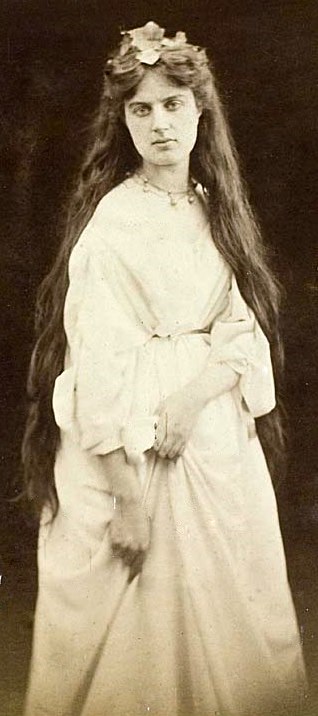
Marie Stillman (1844-1927) was born in London to a cosmopolitan Greek family. She formed part of the second generation of Pre-Raphaelite artists. Stillman started to pose as a model for the Brotherhood after being introduced to Rossetti, but, soon enough, she was interested in art. On the advice of Rossetti, she went to Ford Madox Brown, who taught and mentored her. Indeed, by 1870, she was pursuing an artistic career professionally.
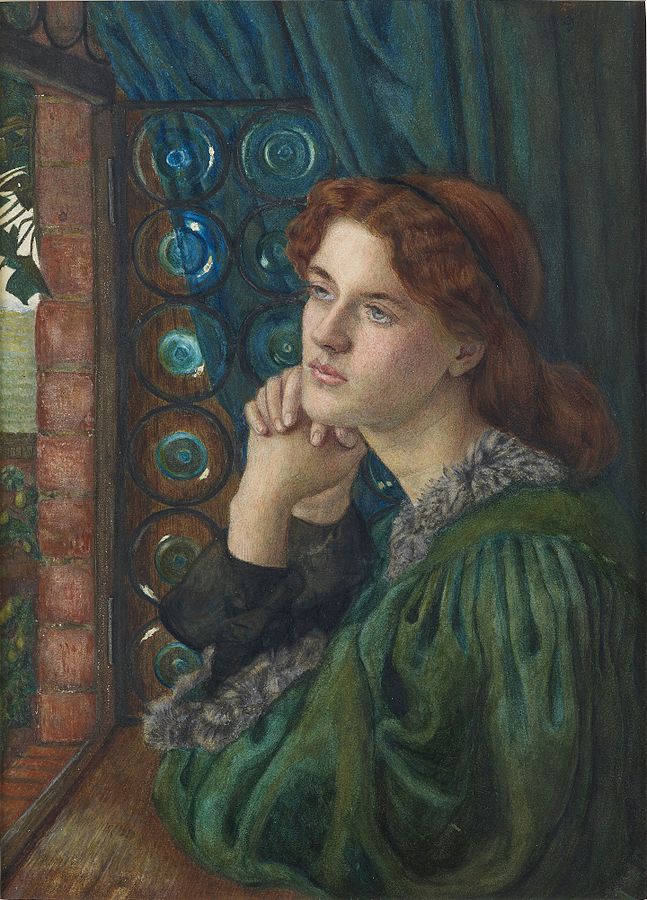
Stillman rose to prominence within the very male Pre-Raphaelite Brotherhood and successfully sold her paintings on both sides of the Atlantic, all the while exhibiting at the Royal Academy and participating in the Philadelphia Centennial Exposition of 1876. Her career was one of the longest-running ones in the Pre-Raphaelite circle, as Stillman was active for over six decades, during which she produced over 150 works.
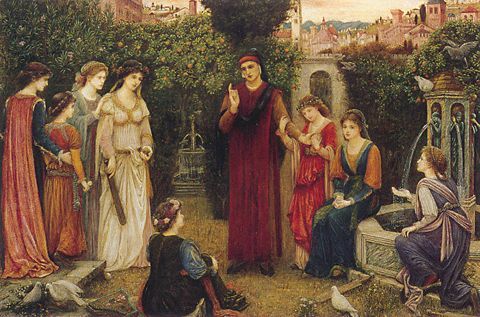
The subjects she chose to depict were typical for a Pre-Raphaelite artist: scenes from the Divine Comedy and Shakespearean plays, all depicting ethereal women. Her figures are poised and appear silent, hesitant even. Consequently, there is a dream-like quality to her works, as if her figures were sleepwalking.
Stillman’s rich style takes inspiration from her mentors, Brown and Rossetti, but is not derivative of them. She was a celebrated artist back in her day and should be so today as well. Regardless, she remains best known for the modeling work she did for the Brotherhood.
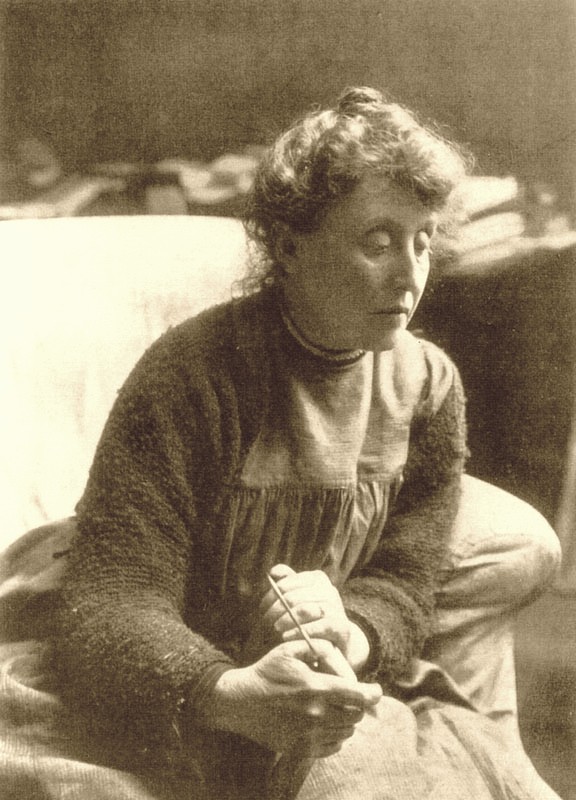
Evelyn De Morgan (1855-1919) was born to an upper-class family in London. She received formal artistic training at the newly established Slade School of Art, one of the first women to do so. Botticelli greatly influenced her, something obvious in works, such as The Garden of Opportunity. Unlike most Pre-Raphaelite painters, though, the final aesthetic result of her work was not a primary preoccupation. De Morgan realized what a powerful tool of self-expression art can be.
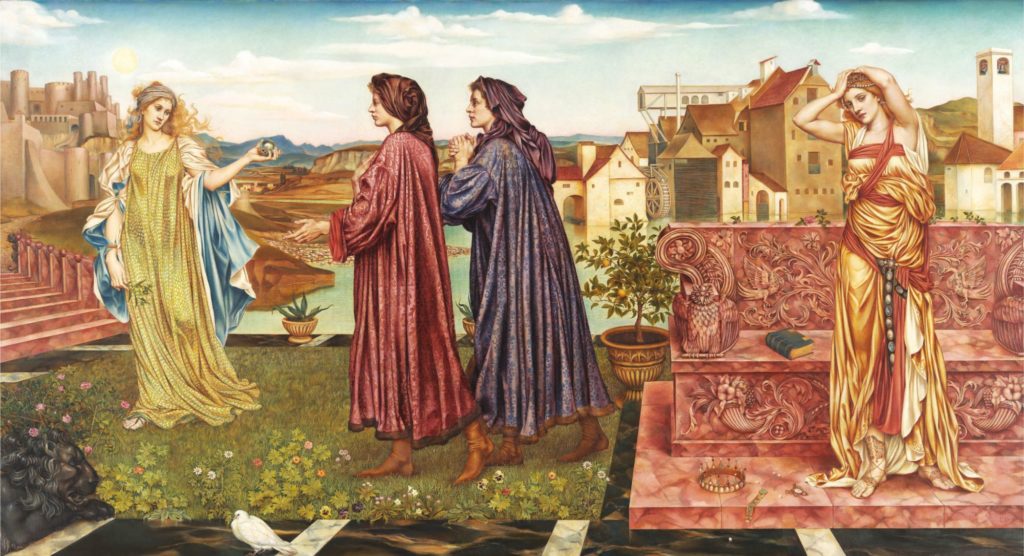
The artist wanted her canvases to represent her socio-political sensitivities. The subject matter she covered is undoubtedly more variegated than that of the Pre-Raphaelite Brotherhood; De Morgan focuses on mythological and religious scenes but also depicts her spiritual visions. One constant in her work is that her paintings are full of strong females taking the lead. The bold colors, luxurious fabrics, and dreamlike figures are aspects that gave De Morgan her trademark artistic style.
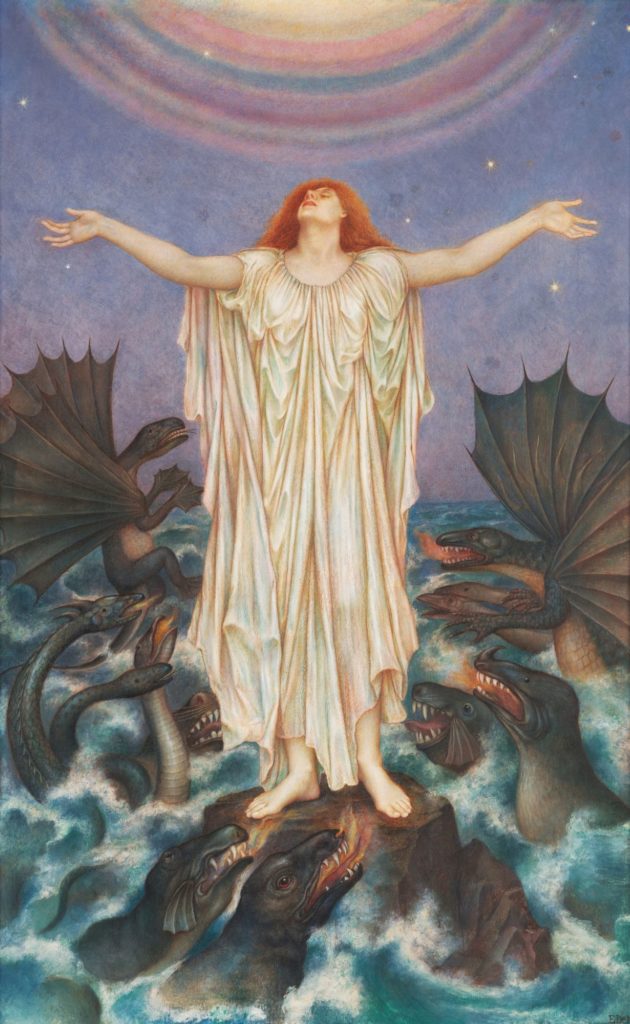
Evelyn was also a pacifist. She painted anti-war paintings which she exhibited in her studio during World War I to raise money for the Red Cross. She worked with symbols, a technique she adopted in the years prior, and approached the matter of war spiritually; the dragons in her paintings represented the evils of conflict, while rainbows reflected hope.
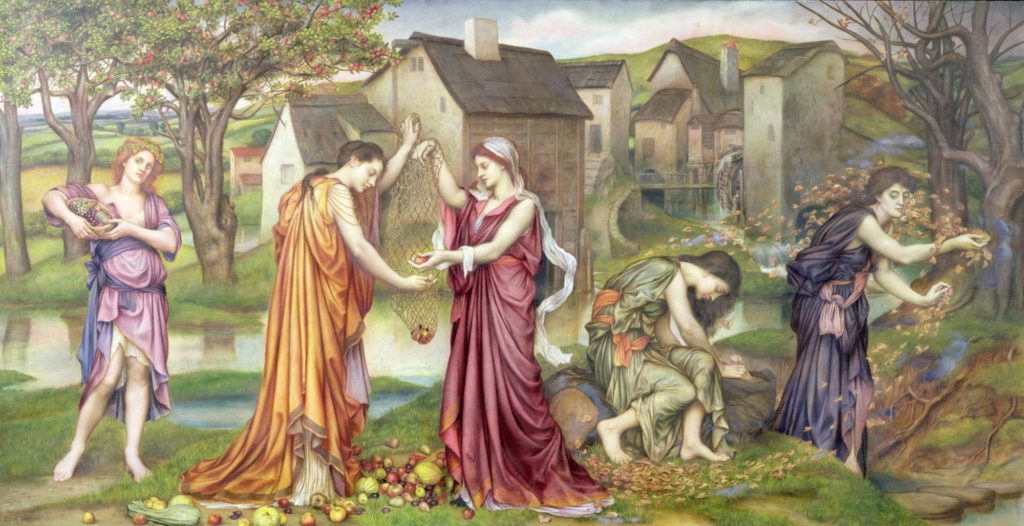
She was a prolific and successful artist during her lifetime, a rare occurrence for a Victorian woman artist. Throughout her career, which lasted for over 50 years, Evelyn De Morgan completed about 100 oil paintings. This, along with the popularity she enjoyed during her lifetime, proves the artist’s talent, meticulousness, business acumen, and artistic vision. Today, she is the most famous woman artist to have painted in the Pre-Raphaelite style – and for good reason.
The Pre-Raphaelite Sisters exhibition was only the beginning of a long journey toward uncovering the truth about women artists. There are women in history whose beauty overshadowed their talents and reduced them to roles of apathy and submission, characteristics they did not espouse. For the past century, most of the aforementioned sisters were only remembered as Pre-Raphaelite models, regardless of their true passions (painting, poetry, embroidery, etc.).
They all tried to artistically establish themselves in a field that only sought to objectify them. Their niche group helped shape the Victorian notion of beauty. Their pale skin and long, curly hair left their mark on history as symbols of British prosperity. But, as is evident, these women could do much more than that. Dr. Marsh writes for the exhibition catalog of Pre-Raphaelite Sisters
For too long, the male artists have dominated accounts of Pre-Raphaelitism. Step forward, Pre-Raphaelite Sisters!
Jan Marsh, catalog of Pre-Raphaelite Sisters exhibtion, National Gallery, London.
Jackson Arn, “The Pre-Raphaelites’ Muse, Leading Light and Sacrificial Lamb”, Artsy, 26 December 2018. Accessed 18 Jun 2020.
Richard Brooks, “The pre-Raphaelite sisterhood is finally getting its due”, The Guardian, 29 September 2019. Accessed 18 Jun 2020.
Maxine Collins and Jane O’Brien, “Marie Spartali Stillman: The female artist time forgot”, BBC News, 9 November 2015. Accessed 18 Jun 2020.
Editors of De Morgan Collection, “Evelyn De Morgan (1855 – 1919)”, De Morgan Collection. Accessed 18 Jun 2020.
Editors of Sotheby’s, “The Tragic Death of Dante Gabriel Rossetti’s Ethereal Muse, Elizabeth Siddal”, Sotheby’s, 17 June 2019. Accessed 18 Jun 2020.
Editors of Royal Academy, “Georgiana Burne-Jones (1833 – 1867)“, Royal Academy. Accessed 18 Jun 2020.
David Elliot, A Pre-Raphaelite Marriage: The Lives and Works of Marie Spartali Stillman and William James Stillman, Antique Collectors’ Club, 2005.
Pamela Gerrish Nunn, Victorian Women Artists, London: Women’s Press, 1987.
Hettie Judah, “Pre-Raphaelite Sisters review – the heroic women behind the frilly-shirted bro-fest”, The Guardian, 16 October 2019. Accessed 18 Jun 2020.
Lily Katzman and Nadine Daher, “The Women Behind the Pre-Raphaelite Brotherhood”, Smithsonian Magazine, 22 January 2020. Accessed 18 Jun 2020.
Helen Lewis, “A New Exhibition Shows Women as Artists, Not Muses”, The Atlantic, 29 October 2019. Accessed 18 Jun 2020.
Jan Marsh, The Pre-Raphaelite Sisterhood, St. Martin’s Press, 1985.
Skye Sherwin, “Joanna Boyce Wells’s Study of Fanny Eaton: strong and graceful”, The Guardian, 18 October 2019. Accessed 18 Jun 2020.
DailyArt Magazine needs your support. Every contribution, however big or small, is very valuable for our future. Thanks to it, we will be able to sustain and grow the Magazine. Thank you for your help!